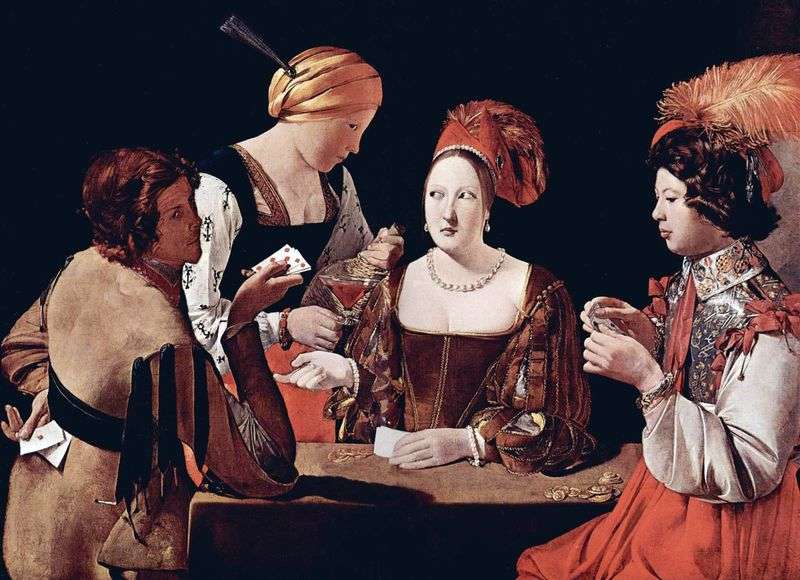
Georges de La Tour – one of the most remarkable masters of realistic painting of the XVII century. After a period of oblivion, his work regained recognition in the 20th century. The artist was born in the family of a baker. In his youth, he was patronized by a noble grandee and writer A. de Rambervillier. La Tour quite early began to conduct vigorous commercial activities.
In 1617 he married and settled in Luneville. The artist went through the horrors of the Thirty Years War: the plague, famine, fires, one of which killed many of his works written for the inhabitants of Luneville. The work of La Tura developed under the influence of Caravaggio, the artist turned to the traditions of the Lothing late Gothic art. The most obvious feature of the art of La Tura was an appeal to everyday scenes, folks types.
The artist created tragic images that cause compassion, inner intense reflection. The picture “Sharpie” is not typical for the artist. The authorship of La Tour is sometimes questioned by experts; nevertheless, this is perhaps the most popular work of the master today.
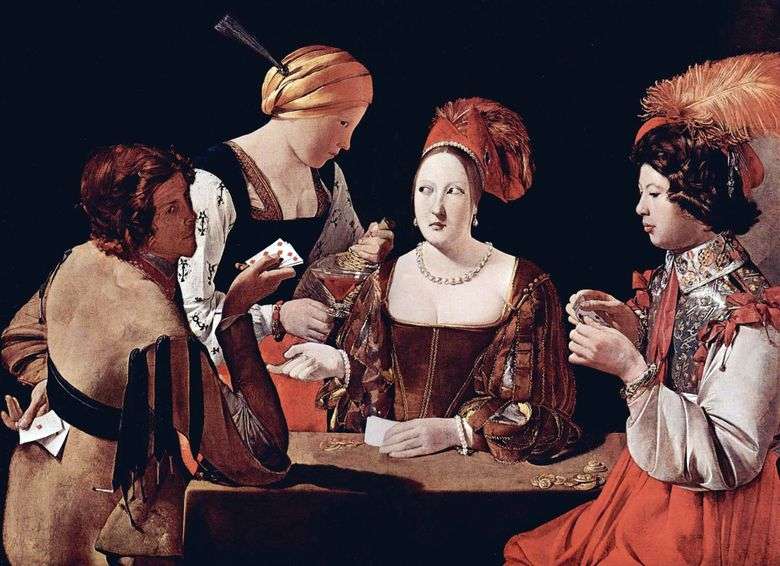 Más afilado con un as de diamantes – Georges de La Tour
Más afilado con un as de diamantes – Georges de La Tour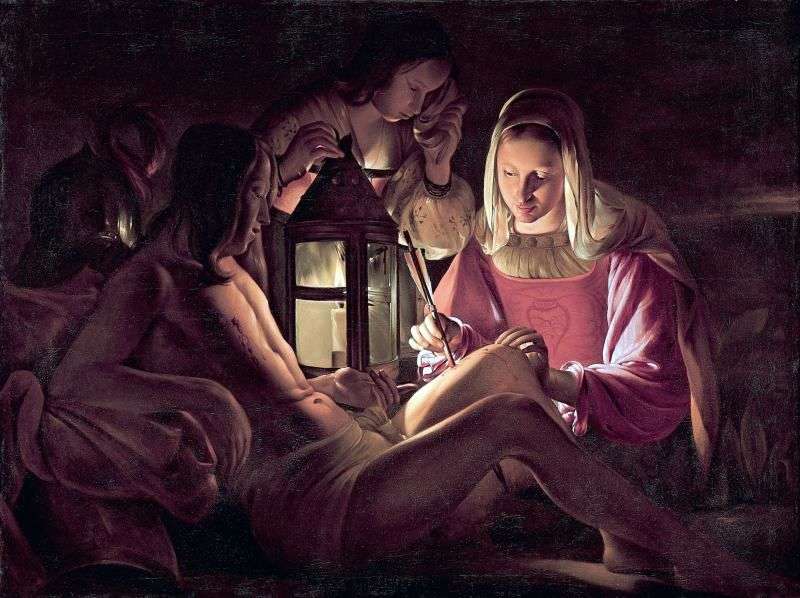 St. Sebastien and the Holy Wives by Georges de La Tour
St. Sebastien and the Holy Wives by Georges de La Tour Un Sharpie avec un as de tambourin – Georges de La Tour
Un Sharpie avec un as de tambourin – Georges de La Tour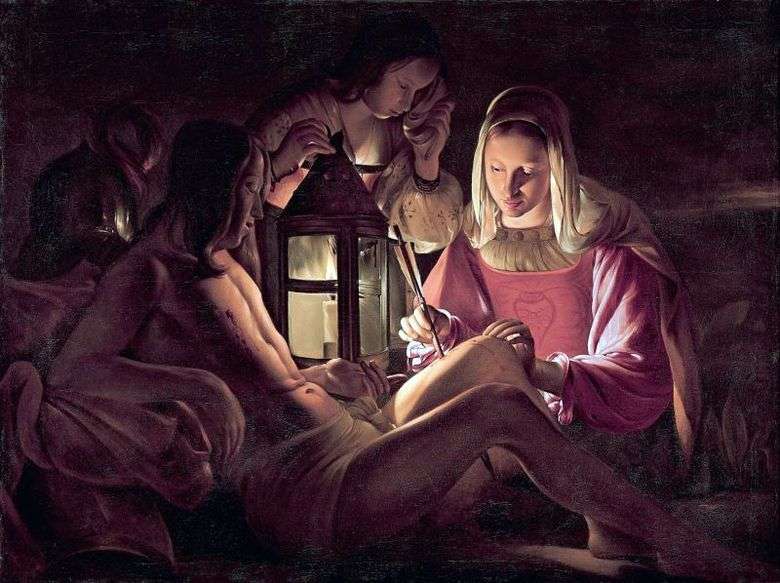 San Sebastián y las santas esposas – Georges de La Tour
San Sebastián y las santas esposas – Georges de La Tour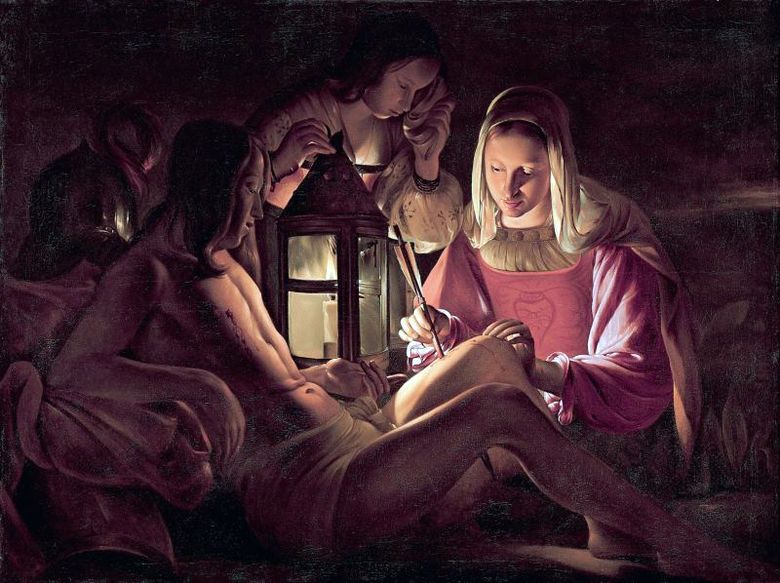 Saint Sébastien et les saintes femmes – Georges de La Tour
Saint Sébastien et les saintes femmes – Georges de La Tour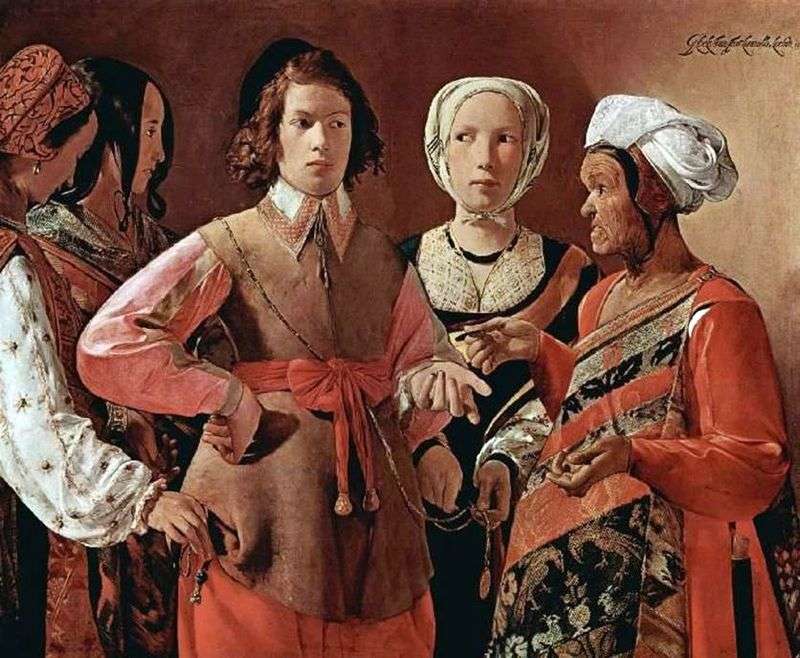 The Fortune Teller by Georges de La Tour
The Fortune Teller by Georges de La Tour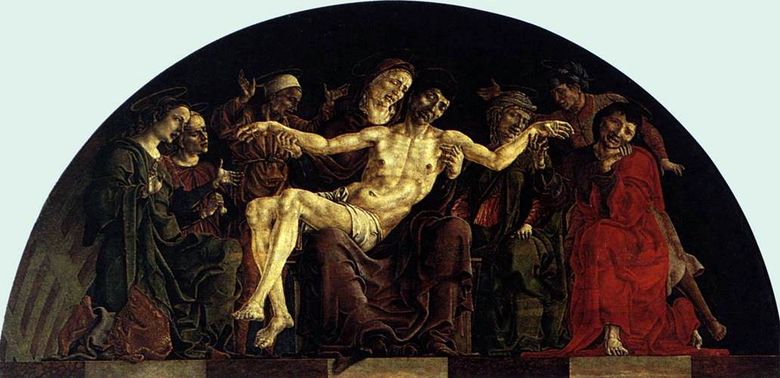 Boire avec les saints. Autel de Saint-Georges à Ferrare – Cosimo Tour
Boire avec les saints. Autel de Saint-Georges à Ferrare – Cosimo Tour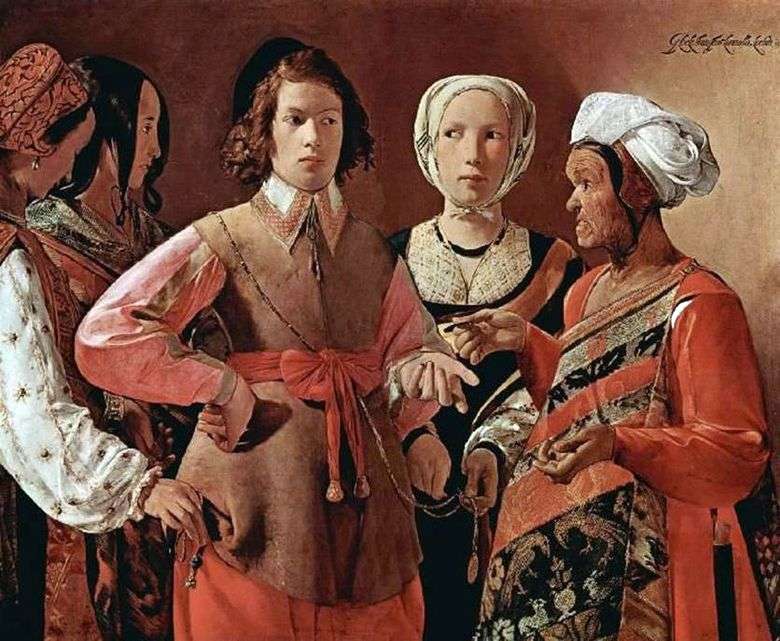 El adivino – Georges de La Tour
El adivino – Georges de La Tour